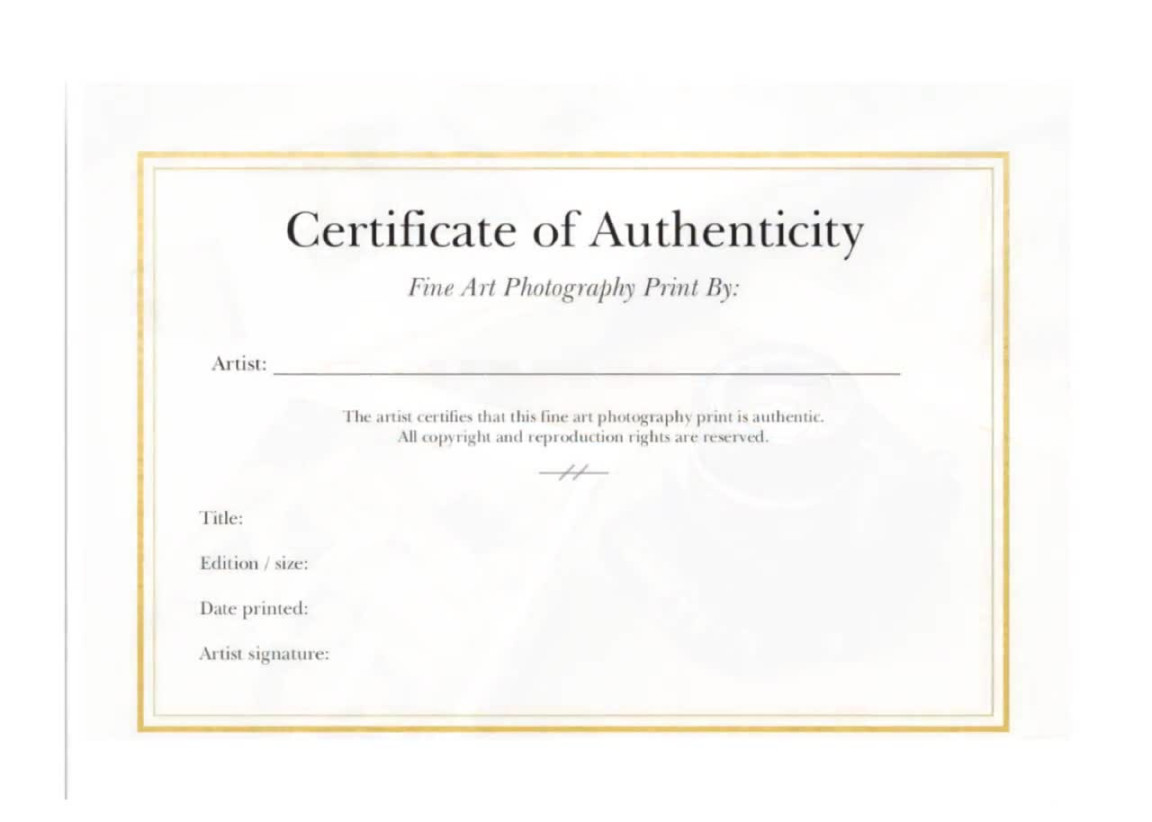A Photography Certificate of Authenticity (COA) is a crucial document that verifies the genuineness and uniqueness of a photographic artwork. It provides essential details about the photograph, such as the title, edition number, and artist’s signature. A well-designed COA can significantly enhance the value and credibility of your photographic work.
Essential Elements of a Photography Certificate of Authenticity
Title and Artist Information

The title of the photograph should be prominently displayed at the top of the COA. Include the artist’s name, contact information, and a brief biography or artist statement. This information helps potential buyers identify the creator and learn more about their artistic style.
Photograph Description
Provide a detailed description of the photograph, including the subject matter, medium used (e.g., digital print, film photograph), and dimensions. This information ensures that the buyer has a clear understanding of the artwork they are purchasing.
Edition Number and Series Information
If the photograph is part of a limited edition series, clearly indicate the edition number and total number of prints produced. This information adds value to the artwork by emphasizing its scarcity and exclusivity.
Date of Creation
Specify the date when the photograph was created. This detail helps establish the artwork’s provenance and historical context.
Signature and Artist’s Seal
The artist’s signature should be handwritten or digitally reproduced in a clear and legible manner. Consider adding an artist’s seal or watermark to further authenticate the document.
Certificate Number
Assign a unique certificate number to each COA. This number can be used to track the artwork’s ownership and history.
Terms and Conditions
Include a section outlining the terms and conditions of the COA. This may include information about copyright ownership, transfer of ownership, and dispute resolution procedures.
Design Elements for a Professional COA
Layout and Composition
Choose a clean and uncluttered layout that allows the essential information to be easily read and understood. Use a consistent font and font size throughout the document.
Color Scheme
Select a color scheme that complements the style and aesthetic of your photographic work. Avoid overly bright or garish colors that can detract from the document’s professionalism.
Paper Quality
Use high-quality paper that is thick and durable. This will give the COA a more premium feel and help it withstand handling and storage.
Security Features
Consider incorporating security features, such as watermarks, holograms, or ultraviolet-sensitive ink, to deter counterfeiting and protect the integrity of your artwork.
Branding
If you have a personal brand or logo, incorporate it into the design of the COA. This will help create a consistent visual identity for your work.
Additional Considerations
Digital COA
In addition to a physical COA, you may also want to create a digital version of the document. This can be stored and shared electronically, providing an extra layer of security and convenience.
Professional Printing
For a truly professional look, consider having your COAs printed by a professional printing service. This will ensure that the document is printed on high-quality paper and with accurate colors.
By carefully considering these design elements and incorporating the essential information, you can create a Photography Certificate of Authenticity that is both visually appealing and legally sound. A well-designed COA will help to protect the value and reputation of your photographic work.